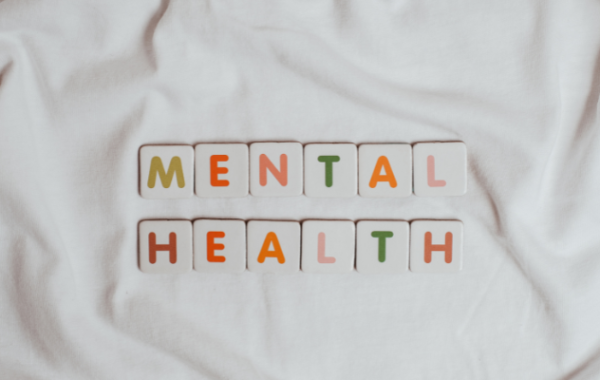Mental Benefits of Working Out: How Exercise Improves Your Mind and Mood

Introduction
Today we will talking about the Mental Benefits of Working Out. Exercise is not only good for your physical health but also your mental health. It is an effective tool for improving your mood, reducing stress and anxiety, boosting self-esteem, and even preventing or managing certain mental health disorders. In this article, we’ll explore the mental benefits of working out and how exercise can improve your mind and mood.
The Link Between Exercise and Mental Health
Exercise has been shown to have a powerful effect on the brain. When you work out, your brain releases chemicals called endorphins, which can help to reduce pain and improve your mood. Exercise also helps to reduce the levels of stress hormones in your body, such as cortisol and adrenaline, which can contribute to anxiety and depression. Furthermore, working out can increase the production of neurotransmitters like serotonin and dopamine, which are important for regulating mood, sleep, and appetite.
What Are the Mental Benefits of Working Out
Regular exercise has numerous mental benefits that can positively impact your overall well-being. Here are some of the key benefits:
- Reduces stress and anxiety levels by releasing feel-good endorphins
- Helps alleviate symptoms of depression and boost mood
- Increases self-esteem and confidence through achieving fitness goals
- Improves cognitive function, memory, and concentration
- Promotes better sleep quality, leading to improved mental clarity and emotional stability
- Enhances resilience and ability to cope with stress and challenges
- Provides a healthy outlet for emotional expression and stress management.
These benefits make exercise a powerful tool for managing mental health and improving overall quality of life.
How Exercise Improves Your Mood

Exercise can have a significant impact on your mood, and there are several ways in which it does this.
Reducing Stress and Anxiety
One of the most significant mental benefits of working out is its ability to reduce stress and anxiety levels. Physical activity has been shown to stimulate the release of endorphins, which are the body’s natural mood boosters. Endorphins help to promote a feeling of well-being and happiness while also reducing feelings of stress and anxiety. Exercise can also provide a healthy distraction from the demands of daily life and help to clear the mind.
Additionally, certain types of exercise, such as yoga and Tai chi, incorporate mindfulness and breathing techniques that can further reduce stress and promote relaxation. By incorporating regular exercise into your routine, you can lower your stress and anxiety levels, leading to improved mental and physical health.
Increasing Endorphins
One of the primary mental benefits of working out is the increase of endorphins in the brain. Endorphins are chemicals that act as natural painkillers and mood boosters. When you engage in physical activity, your body releases endorphins, which can help reduce stress and anxiety levels, and provide a sense of well-being. This natural high can also help alleviate symptoms of depression and improve overall mood.
The endorphin rush that comes with exercise can be addictive and make you feel more energized and motivated to continue with your workouts. Whether you prefer a high-intensity workout or a relaxing yoga session, increasing endorphins through exercise is a natural and effective way to promote mental health and well-being.
Boosting Self-esteem and Confidence
Exercise can be a powerful tool for boosting self-esteem and confidence. When you exercise regularly, you begin to see changes in your body that can improve your self-image and self-worth. As you set and achieve fitness goals, you gain a sense of accomplishment and pride in your abilities. Regular exercise can also help you feel more comfortable and confident in social situations, which can lead to improved relationships and overall well-being.
By taking care of your physical health through exercise, you show yourself that you are worth the effort and deserve to feel good about yourself. This positive reinforcement can boost your self-esteem and confidence in other areas of your life as well.
Exercise and Mental Health Disorders

Exercise can also be an effective tool for preventing or managing certain mental health disorders.
Depression and Anxiety
Depression and anxiety are two of the most common mental health issues people face today. Both conditions can be debilitating and have a significant impact on a person’s ability to function in daily life. The good news is that exercise has been shown to be an effective way to alleviate symptoms of both depression and anxiety. Regular physical activity can boost mood and reduce stress, which are key factors in managing these conditions.
Exercise also provides a sense of accomplishment and can boost self-esteem, which can be especially helpful for those struggling with depression. Additionally, the social aspect of group fitness classes or workout partners can help combat feelings of isolation that often accompany anxiety and depression. Overall, incorporating exercise into a mental health treatment plan can be a powerful tool in managing symptoms and improving overall quality of life.
ADHD and PTSD
Attention Deficit Hyperactivity Disorder (ADHD) and Post-Traumatic Stress Disorder (PTSD) are two common mental health conditions that can have a significant impact on a person’s life. ADHD is characterized by symptoms such as hyperactivity, impulsivity, and difficulty with focus and concentration. PTSD, on the other hand, is a disorder that can develop after experiencing a traumatic event and is characterized by symptoms such as flashbacks, nightmares, and hypervigilance.
While these two conditions may seem very different, they both can have a significant impact on a person’s ability to function in daily life. Exercise has been shown to be an effective tool in managing symptoms of both ADHD and PTSD. By releasing endorphins, reducing stress, and promoting better sleep quality, exercise can help alleviate some of the symptoms associated with these conditions. Incorporating regular exercise into a treatment plan can be a helpful way to improve overall mental health and quality of life for those living with ADHD or PTSD.
How to Incorporate Exercise into Your Daily Routine
If you’re not currently exercising, it can be challenging to get started. However, there are several things you can do to make exercise a part of your daily routine. You must stay motivated to exercise.
Finding Motivation
Finding motivation to work out can be challenging, especially when life gets busy or stressful. Here are some tips to help you stay motivated:
- Set specific and achievable goals for your workouts, such as running a certain distance or lifting a specific weight
- Create a workout schedule that works for your lifestyle and stick to it as much as possible
- Find a workout buddy or join a fitness class to add accountability and social support
- Mix up your routine with different types of exercise to keep things interesting and prevent boredom
- Reward yourself for meeting fitness goals, such as treating yourself to a massage or new workout gear
- Remember why you started and focus on the mental and physical benefits you’ll gain from regular exercise.
By staying motivated and consistent, you can achieve your fitness goals and experience the mental benefits that come with regular exercise.
Setting Realistic Goals
Setting realistic goals is an important aspect of any exercise routine, especially when it comes to reaping the mental benefits of working out. While it’s natural to want to see quick results, it’s important to remember that exercise is a journey, not a destination. Here are some tips for setting realistic fitness goals:
- Start small and gradually increase intensity and frequency over time
- Choose goals that are achievable and relevant to your personal needs and interests
- Break larger goals into smaller, measurable milestones to track progress
- Celebrate small victories along the way to stay motivated and engaged
- Don’t compare your progress to others, focus on your own journey and improvement
- Be patient with yourself and remember that progress takes time.
By setting realistic goals, you can avoid burnout, frustration, and injury, and create a sustainable exercise routine that supports your mental health and overall well-being.
Choosing the Right Exercise
Choosing the right exercise is key to unlocking the mental benefits of working out. The best exercise for you is one that you enjoy and can commit to on a regular basis. This can be anything from jogging, cycling, swimming, yoga, weightlifting, or even dancing. Consider your fitness goals and physical capabilities when selecting an exercise program, and don’t be afraid to mix it up to keep things interesting.
It’s important to find an exercise routine that challenges you but doesn’t cause undue physical or emotional stress. If you’re just starting out, start with something low-impact and gradually work your way up to more intense workouts as your fitness level improves. And always listen to your body – if you experience pain or discomfort during exercise, take a break and seek medical advice if necessary. With the right exercise routine, you can reap the many mental benefits of working out while also improving your physical health.
Staying Consistent
Staying consistent with your exercise routine is key to reaping the mental benefits of working out. Building a habit of regular exercise can be challenging, but it is essential for long-term success. Here are some tips for staying consistent:
- Set realistic goals and a schedule that fits your lifestyle
- Find an activity that you enjoy and look forward to doing
- Mix up your routine to keep it interesting and challenging
- Enlist support from friends, family, or a fitness community
- Track your progress and celebrate your achievements
- Prioritize self-care and rest to avoid burnout.
By staying consistent with your exercise routine, you can create a sustainable habit that supports your mental and physical health for years to come.
Frequently Asked Questions
Q: Can exercise really help with depression?
A: Yes, exercise has been shown to be an effective treatment for depression.
Q: What’s the best type of exercise for reducing stress and anxiety?
A: Low-impact exercises like walking and yoga are great for reducing stress and anxiety.
Q: How often should I exercise to see mental health benefits?
A: It’s recommended that you exercise for at least 30 minutes a day, most days of the week, to see mental health benefits.
Q: Can exercise help with ADHD?
A: Yes, exercise has been shown to be effective in managing ADHD symptoms.
Q: What if I don’t have time to exercise?
A: Even a short workout can be beneficial for your mental health. Try to fit in exercise whenever you can, even if it’s just a quick walk around the block.
Conclusion
In conclusion, the mental benefits of working out cannot be overstated. Exercise has been shown to be an effective way to reduce stress, anxiety, and depression while also boosting mood and improving overall mental health. Incorporating physical activity into your daily routine can help you feel more energized, focused, and confident. It can also help you build resilience and cope with life’s challenges.
Whether you prefer yoga, running, weightlifting, or any other type of exercise, the key is to find something that you enjoy and can stick to long-term. By making exercise a regular part of your routine, you can experience the many mental benefits it has to offer. So, lace up your sneakers, hit the gym, and start reaping the mental rewards of working out.


